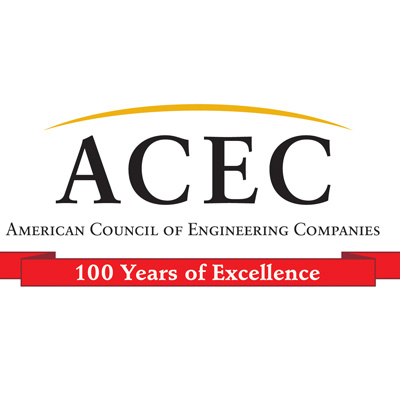AMERICAN COUNCIL OF ENGINEERING COMPANIES (ACEC)
By Bob Violino
 A federal effort to create a 3D spatial standard of all U.S. transportation assets should help accelerate implementation of smart infrastructure, while also providing new opportunities for engineering firms.
A federal effort to create a 3D spatial standard of all U.S. transportation assets should help accelerate implementation of smart infrastructure, while also providing new opportunities for engineering firms.
The Federal Geographic Data Committee (FGDC)—which promotes development, use, sharing, and dissemination of national geospatial data—is working with transportation industry mapping groups to strengthen asset management requirements for the National Highway System, says Robert Dingess, president and CEO of the Geospatial Transportation Information Management Association.
Establishing a national accuracy standard for the collection of these data sets will be helpful in broadening the analytic value of the data beyond simple asset management, Dingess says.
In addition to GTiMA, organizations such as the Intelligent Transportation Society of America and the American Society for Photogrammetry and Remote Sensing (ASPRS) have joined the FGDC effort.
“Our effort is modeled on the basic data collection standards being used by leading transportation agencies,” Dingess says. Engineering firms are welcome to participate as the standard moves through the normal FGDC process or through their participation with these other organizations, he says
GTiMA has proposed that the standard mirror the dynamic mapping standards under development for self-driving or automated vehicles.
“This sub-decimeter relative accuracy standard will be used by vehicles to navigate road systems, and vehicle sensors will all be tied to these accuracy standards,” Dingess says. “Tying the accuracy standards provides opportunities for asset managers to learn from increasingly automated vehicle sensors how engineering decisions affect safety and mobility. It also has the potential to dramatically reduce the cost of access to these data sets for agencies, since private sector firms are collecting the data for vehicles—not asset management.”
Opportunities Ahead
GTiMA’s goal is to align the standards from the start. “GTiMA is working to establish a standard to avoid the broad collection of data that cannot be shared or studied from a network standard,” Dingess says.
Creating and implementing a national spatial accuracy standard is important to the engineering profession for a few reasons, says Stephen Ellis, mobile mapping manager at Langan Engineering & Environmental Services, which provides civil engineering and environmental services
Critically, a standard would ensure that projects crossing jurisdictional boundaries—mainly state lines or regional development organizations—would have the same accuracy requirements, and data developed for those projects would be seamless, says Ellis, who is on the ASPRS LiDAR Mobile Mapping Subcommittee currently engaged in adding mobile mapping collection and accuracy standards to the overall ASPRS mapping standards.
“What this means is that if my engineering firm were working on an interstate redesign project that crosses over a railway on the border of New Jersey and Pennsylvania, for example, any data we acquire from national, regional, statewide or private repositories would all be available with the same derived accuracies,” Ellis says.
This saves project time and resources that would previously have been used in transforming or registering data to the same specifications.
“In some cases, we would have to send a crew into the field to shoot some control points to register the inaccurate data to,” Ellis says. “Say we got the highway data from the state DOT or a local county government, and it was collected to a certain national standard. And we got the rail data from the private owner of the rail line, and it was in a completely different projection and at a completely different accuracy. The disparate data would not align nor be of the same accuracy. This would lead to engineering and design flaws that impact cost, schedule and safety.”
Langan would benefit in the implementation of a singular national standard for transportation asset and infrastructure data collection and accuracy by allowing the use of any data set it needs on a specific project.
“Whether we go out and collect and create data via traditional survey, mobile mapping or UAS [unmanned aircraft systems], or if we were provided data by the client or subcontractor, or even if we download spatial data from a repository, in theory it would all align and have the same derived accuracies,” Ellis says. “In a sense, it would be ‘plug and play,’ saving time and resources in data manipulation as well as ensuring higher confidence in the design and construction plans developed.”
All too often in the geospatial profession, data is used incorrectly and not as intended, Ellis says. A data set may be perfect within itself and for its created purpose, but if it does not adhere to a singular standard, it would not work for other purposes, he says.
“If the user of the data does not have the metadata, or assumes it is usable, it could lead to errors,” Ellis says. “Data created at one-meter accuracy cannot be used for bridge design or storm water runoff modeling. However, it would work well for creating three-foot contours for watershed analysis and some planning and alignment activities.”
If all data was held to a singular accuracy standard for its collected methodology, it would be usable for multiple purposes. “At Langan, we believe in collect it once and use it many times,” Ellis says. “We always strive to collect the most accurate data as possible even if the project requirements do not dictate [that]. The reuse of data by other groups within any organization reduces the cost of collecting, creating and delivering the data.”
Mission Critical
David Evans and Associates is also following the standards developments.
“When DOTs and other agencies collect infrastructure data for use in a programmatic resource, the only way to rely on that data is having a standard that all agencies can reference,” says Marcus Reedy, vice president and manager of the Surveying and Geomatics Center of Excellence at David Evans and Associates.
“Currently, with the lack of a standard, each state is either developing their own standard or not using one at all, and that makes it difficult to share information and have it utilized across an agency,” Reedy says. “Consistency and reliability of any data collected is very important to [making] good decisions.”
Having a standard “will provide a baseline for mapping and data capture that will be more consistently priced, compatible with adjoining data sets from other agencies/municipalities, and reusable/sharable,” Reedy says. “This will open the door to consortiums of agencies, municipalities, etc. to sharing costs for data capture over larger areas, in turn developing contiguous data sets that are ‘equal’ and trusted.”
Engineering firms can help advance a national accuracy standard by taking an active role in local, regional and national groups in providing input on best practices of data usage, Ellis says.
“The more input received on which standards affect which industry, the more metrics can be developed and standards applied,” Ellis says. “The absolute accuracy of a sign post in Nevada should be the same absolute accuracy of a sign post in Florida. Currently it is not. How can an automated vehicle traverse a route if the assets are not mapped uniformly?”
…
Bob Violino is a business and technology writer based in Massapequa Park, N.Y.
Download full article (PDF): Setting the Standard
 About the American Council of Engineering Companies
About the American Council of Engineering Companies
www.acec.org
The American Council of Engineering Companies (ACEC) is the voice of America’s engineering industry. Council members – numbering more than 5,000 firms representing more than 500,000 employees throughout the country – are engaged in a wide range of engineering works that propel the nation’s economy, and enhance and safeguard America’s quality of life. These works allow Americans to drink clean water, enjoy a healthy life, take advantage of new technologies, and travel safely and efficiently. The Council’s mission is to contribute to America’s prosperity and welfare by advancing the business interests of member firms.
Tags: 3D Assets, ACEC, American Council of Engineering Companies, Bob Violino, Engineering Inc., Federal Geographic Data Committee, FGDC






 RSS Feed
RSS Feed